Intel Solutions Marketplace Kiosk Solutions
If you are looking for a qualified kiosk solution then you should browse the Intel Solutions Marketplace for Intel-qualified kiosk solutions. Member entries include:
If you are looking for a qualified kiosk solution then you should browse the Intel Solutions Marketplace for Intel-qualified kiosk solutions. Member entries include:

Burroughs, Inc. is the largest independent service and integration provider for payment and transaction technologies in North America with a 134-year history of innovation and support.
From the first adding machine to today’s most complex cash automation, they’ve seen and helped drive numerous evolutions in payment and transaction technology.
The Burroughs team has expertise and progressive thinking to help guide customers through decisions to ensure the best outcomes. They have experience managing over 100,000 devices, including kiosks, self-checkouts, smart safes, cash recyclers, ATMs, and other 4-wall technology, so customers get maximum uptime, security, and compliance while making sure they achieve greater accountability, insight, and efficiency with every transaction.
Recently, Burroughs announced a rebrand to its visual identity that reflects a commitment to delivering best-in-class service and solutions within financial, retail, gaming, and emerging markets through innovation, collaboration, agility, and service excellence. In addition, a newly updated website highlights the company’s OEM-agnostic technology approach and focus on providing integrated payment and transaction solutions to help customers get the most out of their technology investment.
To learn more about Burroughs and their solutions, visit https://www.burroughs.com/.
Send a msg here
[contact-form to=”[email protected]” subject=”Burroughs”][contact-field label=”Name” type=”name” required=”1″][contact-field label=”Email” type=”email” required=”1″][contact-field label=”Message” type=”textarea”][/contact-form]


As discussed further below, scientific studies support that certain telethermographic systems, also known as thermal imaging systems, may be used to measure surface skin temperature. These systems include an infrared thermal camera and may have a temperature reference source. In this document, they are referred to as thermal imaging systems.
The person who handles the system should follow all manufacturer instructions to make sure the system is set up properly and located where it can measure surface skin temperature accurately.
The person who handles the system should be trained to properly prepare both the location where the system will be used, and the person being evaluated, to increase accuracy. For details, see the standards and scientific papers listed under References below.
The person handling the system should make sure the person being evaluated:
A: When using a thermal imaging system, it is important to assess whether the system will provide the intended results in high throughput areas. We understand that these devices are being used for initial temperature assessment and triage of individuals for elevated temperatures in medical and non-medical environments. They should not be used for measuring temperatures of many people at the same time in crowded areas, in other words “mass fever screening” is not recommended.
Based on where the system will be used, there may be more appropriate methods to initially assess and triage people, especially if there is a risk that infected people would not be identified right away. For example:
A: No. A fever or higher body temperature is only one possible symptom of a COVID-19 infection. Thermal imaging systems generally detect a high body temperature accurately when used appropriately. They do not detect any other infection symptoms, and many people with COVID-19 can be contagious without a fever. Also, a high body temperature does not necessarily mean a person has a COVID-19 infection.
All fevers measured by thermal imaging systems should be confirmed by another method and followed by more diagnostic evaluations for other symptoms, as appropriate.
A: To help address urgent public health concerns raised by shortages of temperature measurement products and expand the availability of telethermographic systems used for initial body temperature for triage use during this COVID-19 public health emergency, the FDA is applying regulatory flexibility for certain telethermographic systems as outlined in its enforcement policy.
When a high body temperature is identified by thermal imaging, an additional evaluation should follow (for example, doctor evaluations or interview, laboratory testing and patient observation).
A: As discussed in the enforcement policy, telethermographic systems are devices when they are intended for a medical purpose. To determine if these products are intended for a medical purpose, FDA will consider whether:
A: Both thermal imaging systems and non-contact infrared thermometers (NCIT) can measure surface temperatures without contact. An NCIT measures surface temperature in a single location, whereas a thermal imaging system can measure temperature differences across multiple locations, creating a relative temperature map of a region of the body. The enforcement policy in the guidance applies to use of thermal imaging systems to determine initial body temperature measurements.
There is a separate enforcement policy that applies to certain NCITs and other clinical electronic thermometers: Enforcement Policy for Clinical Electronic Thermometers During the Coronavirus Disease 2019 (COVID-19) Public Health Emergency.
Temperature Kiosk – Explanation of FDA Non-Enforcement Letter
Nice article on/with Paul Brown, the CEO of Inspire Brands by Elliot at KMC. If you operate or manage restaurants register directly here for webinar today at 3:30 EDT.
Excerpt:
On Tuesday, attendees at the MUFSO virtual conference will have a chance to hear from a leader of one of the more innovative restaurant companies when Paul Brown, CEO of Inspire Brands, speaks on “Building a Culture that Sparks Innovation” at 3:30 p.m.
Brown, whose resume includes leadership roles at Arby’s, Hilton Worlwide, Expedia Inc. and McKinsey & Co., will offer his insights on how to stimulate innovation in a team. His presentation is sponsored by the Kiosk Manufacturer Association.
KMC was able to submit some questions to Mr. Brown and here are some the areas he talks about in the KMC article.
Read the full article interview on/with Paul Brown, the CEO of Inspire Brands by Elliot at KMC.
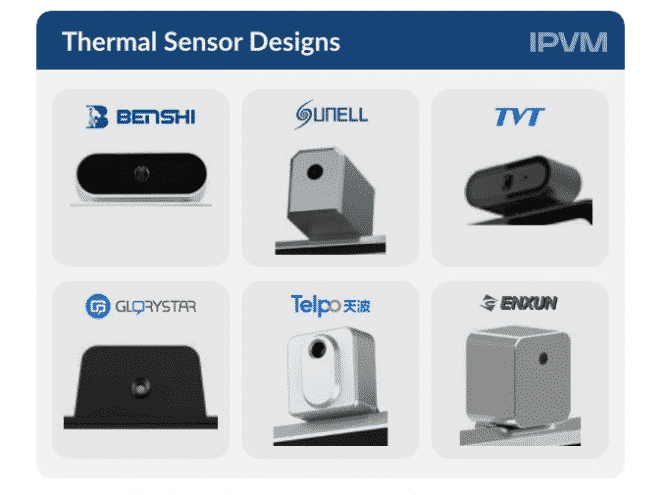
Table of Contents
Thanks to IPVM for the hard work!
IPVM has found 40+ USA and EU companies relabeling fever tablets designed, developed, and made in China, identifying 7 main China suppliers, excluding Dahua and Hikvision, who supply the
overwhelming majority of western brands.
In this report we examine:
Fever tablet suppliers heavily rely on the accuracy and specs of medical-grade sensors, from Melexis and others, to elevate their tablet marketing and support their use.
We spoke with Melexis and in this report, examine:
Compare to Heimann (who we covered here) the other widely used European tablet thermal sensor supplier.

Read the full post at Nanonation website – Nov2020
Excerpt
Nanonation is partnering with the Nebraska Army National Guard to bring a Virtual Reality (VR) experience to their recruiting efforts. Through the partnership, Nanonation has been able to understand the process in which young men and women are recruited to the Guard and are developing a VR game consistent with their training exercises. We are going to walk you through the project in the coming months and allow you to see how it is done! The first step – create the perfect character animations who we lovingly call Pete, Chloe, and Sergeant. The second step – record the perfect audio for each character and work through the kinks with in-person testing, which took place in our offices this week. See the photos below.
Read the full post and see the pictures at the Nanonation website
Temperature Kiosk Software – Digital Signage Software Pandemic Products
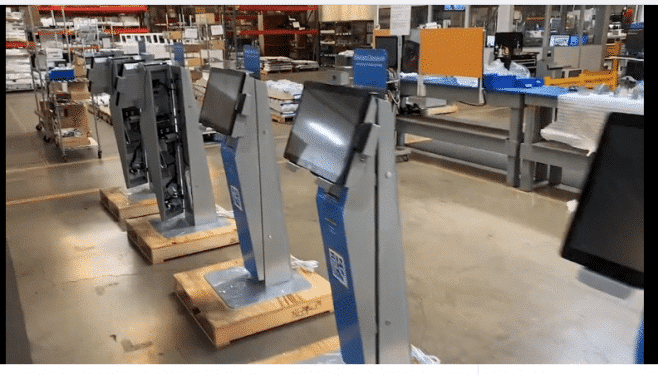
From LinkedIn post by Frank Olea CEO. Healthcare Check-in Kiosks on the line today. This is a special version of the Austin where the screen and camera can be tilted up and down by the user.
olea-healthcare-austin from Kiosk Manufacturer Association on Vimeo.
Outdoor Kiosk Model Geneva by Olea Kiosks for Outdoor Ticketing
Olea Kiosks – Rusty Gaynes Director of Strategic Alliances and Partnerships
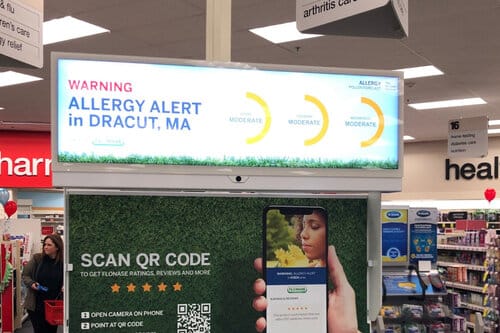
Powered by enhanced features, Acquire Digital’s Shelf-Edge, Endless Aisle, and Retail Wayfinding solutions are transforming the shopping experience in brick and mortar stores. From the AcquireDigital Blog —
During the initial months of 2020, retailers dealing with essentials were left with very little time to act and put in measures to safeguard the health of their employees and customers. On the other hand, non-essential retailers were making every possible effort to move from the traditional, physical environment to a digital one. With the arrival of June, e-commerce stores were way ahead of the usual brick and mortar stores with more than 4X sales.
While this pandemic posed many challenges for physical storefronts, technological advances are accelerating the digital transformation of the retail industry. These technologies power the enhancement of customer personalization, physical store shopping, and contactless service.
An interesting fact worth mentioning is that these experiences aren’t just limited to hyper or superstores or high-end retailers; midsize and small stores all need to change their focus and shift toward these next-gen technologies to serve their customers in a better way in the wake of a new normal.
Key Challenges for Brick & Mortar Stores
For retailers, it is critical to understand that the traditional shopping experience is changing, and expecting things and businesses to return to ‘normal’ is futile. Even before this pandemic struck the world, traditional retail stores were already under attack, thanks to e-commerce giants like Amazon.
The pandemic has simply widened the gaps and has made the situation critical for retailers to adjust to market demands. With more and more consumers opting for online shopping, retailers are in no position to be in sit-and-watch mode. For the first time ever, more than a quarter of holiday sales will occur online.
According to Digital Commerce 360, online holiday sales are expected to surge to 43% in 2020.
Retailers looking to bridge the gap need to focus on improving the in-store experience to drive online sales. We’ve seen the emergence of retailers like Bonobos who use physical locations to increase awareness and allow users to try on, and touch and feel the products before purchasing online or through a ship-to-home purchasing model.
On the other hand, larger retailers should be taking a closer look at how consumers navigate their stores and make purchasing decisions. Utilizing the advancement in digital technologies can assist retailers with these changes.
A New, Redefined Baseline: Before anything else, traditional stores have to ensure that their operations comply with the necessary health-and-safety regulations while meeting the basic consumer expectations. This involves maintaining a proper physical distance, mask-wearing, controlling the number of customers in the store, enhancing the speed of service, initiating contactless transactions, and introducing self-service and eCommerce options.
Rethinking In-Person Experience: Because of the COVID-19 pandemic, retailers have to ensure that the in-store experience they are providing to their customers is simply extraordinary. In other words, retailers have to give their customers a compelling reason to visit. Only such in-store experience would break the inertia of consumer behavior that they adopted during the early days of the pandemic.
Digital Technology is The Ally in Tough Times
Similar to other industry verticals, digital technology has become the savior of the retail industry as well. Retailers are utilizing many existing technologies to elevate the customer experience while safeguarding the health interests of their employees.
Read the full article
A new November update to the PCI SSC Technical FAQs has been issued. It is listed below. We have also listed some other interesting questions.
For a full copy of this document, it is provided by the PCI Security Standards Council
November 2020: POI devices must support one or more of four specified techniques for the loading of private or secret keys. Methods a and b are for plaintext key loading and methods c and d are for encrypted key loading. The requirement specifies that EPPs and OEM PEDs intended for use in an unattended environment shall only support methods a, c, and d. It further specifies that SCRPs shall only support the loading of encrypted keying material. Are there any other restrictions?
A Yes. For all new evaluations (i.e., evaluations that result in a new approval) of POI v5 devices, the POI devices must support at least one of the encrypted key loading methods for the loading of private or secret keys
Requirement A9 stipulates that the device must provide a means to deter the visual observation of PIN values as they are being entered by the cardholder. What methods are acceptable?
A The POI Security Requirements provide for several options that may be used separately or in combination to provide privacy during PIN entry. These options are: ▪ A physical (privacy)shielding barrier. Note that in case the privacy shield is detachable, a user’s guide must accompany the device that states that the privacy shield must be used to comply with ISO 9564. Optionally, the user’s guide can also reference PCI device requirements; ▪ Designed so that the cardholder can shield it with his/her body to protect against observation of the PIN during PIN entry, e.g., a handheld device; ▪ Limited viewing angle (for example, a polarizing filter or recessed PIN pad); ▪ Housing that is part of the ATM or kiosk, cardholder’s hand or body (applies to handheld devices only); and ▪ The installed device’s environment.
May (update) 2018: PIN entry devices may physically integrate in the same device other functionality, such as mobile phone, PDA capabilities or POS terminal. Handheld configurations of PIN entry devices may accommodate the attachment (e.g., via a sled, sleeve or audio jack) of a mobile phone, PDA or POS terminal, where the attached device communicates with the PED. Such a configuration appears as a single device, with separate interfaces for input by the clerk and cardholder. What considerations must be taken into account for either of these configurations?
A For any device where the cardholder is expected to use the same interface for PIN entry as the clerk would use for phone, PDA, payment application, etc. purposes, or where there are multiple interfaces in a single integrated device, the integrated device must be physically and logically hardened in accordance with the PTS POI security requirements. In a handheld configuration with an attached device, there is a risk that the cardholder enters the PIN on the wrong interface. Furthermore, the communication interface between the PED and the attached device may give the latter access to MSR functions without cryptographic controls, allowing skimming of card account data. In this integration model, then either: ▪ Both devices are assessed and validated as compliant to the PTS POI requirements, or PCI PTS POI Evaluation FAQs – Technical – For Use with Version 6 November 2020 Copyright © 2013-2020 PCI Security Standards Council, LLC. All Rights Reserved Page 8 ▪ The PED device, which must also control the card reader(s), must implement and be validated against the PTS POI SRED module. The PED must enforce SRED functions for encryption of card data at all times. The PED is only allowed one state, and that is to encrypt all account data. It cannot be configured to enter a state where account data is not encrypted.
May (update) 2018: PIN Entry Devices that attach to a mobile phone, PDA or POS terminal via a sled, sleeve, audio jack, or wireless connection are required to support SRED. Does this apply to PEDs that are integrated with other devices (such as a tablet or mobile phone) that appear as a single device?
A Yes. An integrated device is one where two physically and electronically distinct devices (e.g., a PED and a commercial off the shelf (COTS) device such as a mobile phone) appear as a single device through the use of the plastics to mask the connectivity. In such a configuration, there is a risk that the cardholder enters the PIN on the wrong interface. Furthermore, the communication interface between the PED and the integrated device may give the latter access to card reader functions without cryptographic controls, allowing skimming of card account data. In this integration model, then either: ▪ Both the PED and non-PED are assessed and validated as compliant to the PTS POI requirements, or ▪ The PED, which must also control the card reader(s), must implement and be validated against the PTS POI SRED module and be both physically and electronically distinct from the non-PED system (for example, it is not acceptable to have the PED firmware execute within the same processor as the non-PED firmware). The PED must enforce SRED functions for encryption of card data at all times. The PED is only allowed one state, and that is to encrypt all account data. It cannot be configured to enter a state where account data is not encrypted. The Security Policy must also state that the non-PED has not been assessed under the PCI PTS program and security guidance is required to ensure the secure operation of the solution. An additional note will be added to the portal noting that the non-PED has not been assessed under the PTS program.
October 2018: Are there minimum requirements for the version of Android to be used within a PTS device?
A Yes, it is expected that the Android version is officially supported with security patches, at a minimum. Any reports, including deltas, where the Android version is not supported with regular security patches will be rejected. Where these patches are not provided by Google, evidence of security patches (implemented at least monthly) provided by the vendor must be documented in the report provided by PCI; evidence for this is expected to be validation of the update code by the laboratory for at least two previous patches, as well as validation by the laboratory that these patches have remediated existing known vulnerabilities in the version of Android used. Vendors should note that this means that consideration for the future patch status of any Android version used must be made during the initial design stages of the device, to prevent unexpected rejection of devices after an Android version becomes unsupported during the development of a solution.
What vulnerabilities must be taken into account for a touchscreen?
A If the sides are accessible, an overlay attack utilizing a second, clear touchscreen could be a problem. The connection/path from the touchscreen to the processor (and any devices used for decoding the signals in between) needs to be verified to be secure. Bezels around the touchscreen are especially dangerous because they can conceal access to areas of concern that are described above. The API for firmware and applications (if applicable) needs to be looked at carefully to determine the conditions under which plain-text data entry is allowed. Example: It should not be possible unless under acquirer display prompt-controlled devices, for a third party to display an image (JPEG) that states “press enter when ready for PIN entry” and then have a plain-text keypad pop up on the next screen. The extra caution is warranted for touchscreen devices because of the desire to make touchscreen devices user-friendly and to run many different, unauthenticated, uncontrolled applications. This is especially true for the devices that are intended to be held because of the tendency to regard them as a PDA that can perform debit transactions.
February (update) 2014: Does the use of protective keypad overlays impact the approval status of a device?
A Yes. In general, overlays are not supported by the device approval program due to the potential for keypad tapping or hiding tamper evidence. Overlays may be used where they do not cover any portion of the PIN entry area. For example, in a touchscreen device where the touchscreen is used for both signature capture and PIN entry, an overlay may be used to protect the signature area from excessive wear. In this example only the area used for signature capture may be protected. The material used must be transparent, and not merely translucent, so as not to obstruct the key-entry area when viewed from any angle
Some devices ship with firmware that may be convertible into a compliant version but is not compliant as shipped. When is this acceptable?
A This is only acceptable where the conversion is one way and cannot be reversed. A device can only be converted to a compliant version. It shall not be capable of converting a compliant version to a non-compliant version. The conversion must be performed at the initial key loading of the acquiring entity’s secret keys. The transformation must result in the zeroization of any previously existing acquiring entity secret keys. The compliant version of firmware must be clearly distinguishable from the non-compliant version. Merely appending a suffix (one or more characters) to an existing firmware version is not acceptable. Rather the conversion must result in a high order version number that is clearly distinguishable to purchasers of such devices. Only the compliant version shall be approved and listed.
January 2015: There are a number of FAQs on the use of wireless technologies, such as Bluetooth and Wi-Fi. What is the intent of these FAQs, and does PCI have any specific requirements for other types of communications technologies?
A The intent of the FAQs on all wireless communications for POI devices is to ensure that the interfaces of the POI are protected such that: ▪ Card data cannot be easily intercepted. ▪ Command interfaces to the terminal cannot be easily accessed, intercepted for attack (such as MITM), or used as an attack vector into the device. ▪ Compromise of the interface does not lead to, support, or facilitate further compromise of security assets of the POI. PCI does not mandate or require the use of any specific communication technology, but any implementation must meet the above requirements through some aspect of the physical or logical layers of communication. Physical or direct wired communication often achieves this through the nature of its physical interface. Wireless communications cannot rely on this and therefore must rely instead on security at the link or application layers through use of a Security Protocol to establish a trusted path for all communications over the wireless link. This Security Protocol must have been tested and approved under the open-protocols module of the PCI PTS evaluation of that device, and examples of acceptable Security Protocol implementations include WPA2 (implemented at the link layer), or VPN encrypted tunnels (implemented at the application layer)
December (update) 2016: Can a PTS device be used as a beacon (iBeacon or BLE beacon) transmitter?
A Beacons for any version of BLE (e.g., 4.0, 4.1) are allowed providing the following conditions exists and are validated by a PTS approved lab: ▪ The beacon is listed as a device interface in the PTS POI report. ▪ Over the Air (OTA) provisioning is not allowed at any time. Provisioning and updating of beacons must be consistent with existing PTS standards. (i.e., Section J, B4 or B4.1) ▪ Must be referenced in the security policy. ▪ Beacons are transmit-only. The lab must validate that BLE communication cannot be used to respond to any external requests, connect, pair, or otherwise provide two-way communication to any other device. ▪ The vendor provides documentation on the secure use and provisioning of the beacon and that the documentation clearly states the beacon is used for transmit only, and that OTA provisioning is not allowed. ▪ The vendor will document the purpose of use of the beacon functionality⎯i.e., its intended use. The documentation must include what data is transmitted and ensure that no sensitive data can be transmitted. ▪ The PTS device is never allowed to receive beacon transmissions.
Additional Links
Relevant PCI Compliance Member Links

Text-to-Pay for Restaurants
Datacap and Dash Now enable Text-to-Pay (eCommerce transactions) alongside card-present payments for any Point of Sale via Datacap’s NETePay Hosted™ platform. No hardware or mobile app required.
Editor Note: This type of transaction is very common. Calling into order is likely the most common way of ordering. We order food regularly from restaurants and unless you are a loyal customer and have bothered to load their app and sign in to their loyalty program (and released all of your personal information to them along the way), its very problematic. Even the new Google Pay works and then it doesn’t work. We have a loyalty account at Paneras e.g. Ordering via the mobile and their website doesn’t link my phone number and rewards to my account, unless I use the Panera app and logged in.
Gaining new customers would seem to be ideal first priority. Putting barriers in front of those customers “trying” your restaurant is counterproductive.
Text-to-Pay for To-Go Orders
Send a text message to your customer allowing them to pay for their order remotely and receive a real-time notification when the customer arrives to pick up their order.
More posts by Datacap
About Datacap Systems, Inc.
Datacap develops processor and hardware agnostic payment solutions for any Point of Sale regardless of industry vertical or operating system. Our industry-standard solutions are utilized by hundreds of Point of Sale developers in North America in an array of vertical markets.
DATACAP FOUNDED IN 1983
Datacap becomes the first to provide cash registers with integrated payments and data capture/movement capability, sold through a network of retail systems developers and their dealers.
Reported on Venture Beat Jan2021
Excerpt:
Enterprise-focused visitor management software provider iLobby has raised $100 million in a round of funding from Insight Partners.
Despite the rapid push to embrace remote working in 2020, many — if not most — businesses will likely return to physical office spaces in some capacity once it’s safe to do so. And, of course, some businesses are not well-suited to fully remote work.
First time for everything. Here is another example of business taking the transaction to the consumer. A variant on home delivery.
From outside the US (that figures…) — Mobile branch #Instant #Card #Issuance is the hottest solution on the market helping onboard and issue any financial EMV, Telco Sim and National ID cards in real-time.
This brings a new angle to RMUs (Remote Merchandising Units) such as cellphone, sports, cosmetics and our favorite, chocolate kiosks that you used to see at airports (when we actually went to airports)
We were/are having a discussion on LinkedIn about this and implications application in world markets. We see the Underbanked as a potential big user of mobile payment — mobile as a payment mechanism that goes to the consumer. Hard to spend time on millennials that buy lattes at Starbucks on their iPhone. They have their solution. Thanks to Justin Henry in Dubai for bringing this to our attention.
BigHospitality article Feb 2021 —
Excerpts from:
All in all a typical Intel paid proselytization
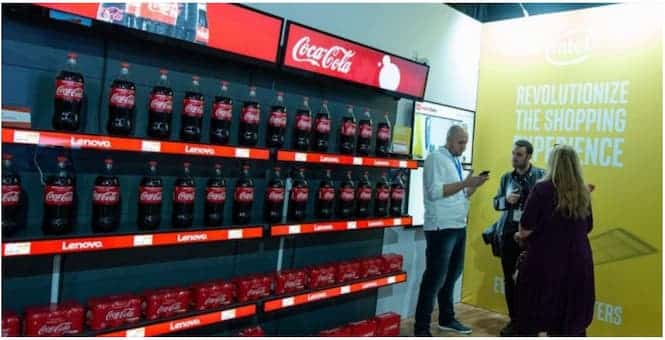

Let’s face it, the retail and shopping experience is changing at lightning-fast speeds to keep up with changing consumer habits and technology innovations. Nowadays, everything we want is at our fingertips, whether it’s groceries, new shoes, or a new car. We no longer need to visit a store; our devices and other technology advancements are our outlets. As consumers, we have tons of options to buy products regardless of if it’s online, offline or a combination of both.
The combination, often known as Omnichannel, is where we are seeing many retailers going.
As stated on Bloomreach.com, “Omni-channel retail is a multichannel approach to sales that focus on providing a seamless customer experience whether the client is shopping online from a mobile device, a laptop or in a brick-and-mortar store.”
According to Harvard Business Review, 73 percent of all customers use multiple channels during their purchase journey. Only when the customer has gathered as much information as possible from a variety of sources to support their purchase decision, will they decide to buy from a retailer.
Omnichannel retail increases the comfort of consumers and we’ve seen many examples of these experiences across many retailers. Within digital signage ‘type’ solutions, Acquire Digital has been ahead of the curve with many industry-leading solutions such as:
Store Wayfinding: allows consumers to set a shopping list at home and calculates the best route to take to pick up all their items while in-store. Combining data from the retailer’s inventory management system and planogram allows for a seamless shopping experience for customers combining the online experience to in-store.
If you are looking to see a first-hand look of an example of what the solution could look like, check out the Retail Smart Shopping Wayfinder and Advertising Kiosk demo:
Endless Aisle Kiosks: extend the digital experience to allow for online shopping for additional products or ship-to-home capabilities for larger products. Watch the video.
Digital Pricing Label Displays: provides the ability to show dynamic product pricing, and additional content about products or allows users to scan QR codes to see additional content via their mobile device. Acquire’s Shelf-Edge solution is truly a first of its kind when it comes to an omnichannel experience.
Check out Acquire’s Shelf-Edge solution in action:
Augmented Reality (AR) and Virtual Reality (VR): Using the Acquire Vision platform data collection and analysis play a vital role and help shape the entire experience. While ‘big data’ pulls together the solution and shapes the role customers play in the shopping experience, other interactive solutions like Interactive Advertising and Virtual Try-on experiences provide other ways to increase engagement and ‘Omni-Channel’ outlets.
This can be seen with ‘cookies’ when you visit a website or provide your contact details for retailers’ loyalty programs. The data collection is to enhance the experience, but it also helps tailor the shopping experience to what a customer is looking for. It gets fun when you can personalize the in-store experience to the level of personalization that a user gets online.
As the enhancements continue, we will see the Omni-Channel experience evolve, and Acquire Digital is here to bridge the gap from the online to the in-person experience.
We thought this was a nice graphic showing the various financial institutions. One question might be regarding this is where does Stripe fit in?
US Financial Network
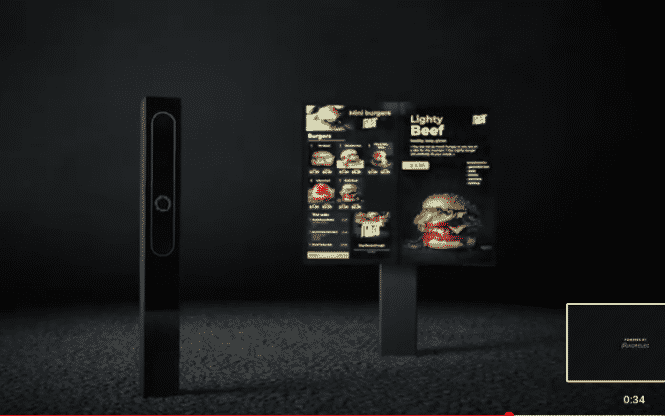
Original article (in German) Mar2021
The almost 1,000 McDonalds restaurants with McDrive in Germany will be equipped with LG High Brightness Displays by the end of the year. Almost all drive-thru locations receive the new wind- and weatherproof, sunlight-compatible digital signage displays. March 17, 2021 by Florian Rotberg
In total, more than 4,000 LG full outdoor screens of the XE4F series with full HD resolution in 16: 9 format will be installed by the end of 2021. At least three 55-inch devices are installed per restaurant, which are set up in portrait format directly next to or behind one another in the entrance area. There is also a stand-alone 49-inch device that is also installed vertically. All displays dynamically present the McDonald’s menu offerings.
According to LG, the anti-reflective IPS displays show a brilliant picture with a luminance of 4,000 cd / m² even in the direct midday sun – thanks to the viewing angle of 178 °, even when the guests are looking at it from the side. The slim frame makes it easier to place the screens next to each other in a visually appealing way. Outdoor screens have to be extremely robust, so protection class IP56 should guarantee protection against dust and strong water jets. The hardened laminated protective glass with the highest IK10 certification prevents mechanical damage. LG also supports HDBaseT, a technology that has so far been little used in professional digital signage, which sends all data, signals and power over a single cable.
“LG Electronics convinced us with high-quality technology and a great team,” says Giovanni Gallo, Department Head Restaurant Innovation at McDonald’s Germany. “Together we have found an ideal solution for the further digitization of our McDrive restaurants in Germany.”
“Our team was able to convince McDonald’s through first-class cooperation across all disciplines and with great support from the entire company management”, emphasizes Frank Brühne, head of the business development team at LG Information Display in the DACH region. “We worked closely with external partners.”
Invidis Insight — The role of DriveThru sales has changed significantly outside of North America since the pandemic broke out. While 80% of guests in North America use the DriveThru, it was the other way around in Europe and Asia: 80% of guests ordered directly in the restaurant. But the trend is clearly towards DriveThru, too, and here digital signage plays a decisive role in the ordering process; dynamic AI-controlled content enables an optimal customer journey.
More Info
Visit Frank Mayer and Associates, Inc. for full senior living technology solutions
In a recent survey of senior housing professionals, 80% of the respondents indicated their facilities increased their tech budget to help address issues caused by the pandemic. This number is expected to increase in 2021. Investing in telehealth kiosks, check-in technology, remote patient monitoring and more can go well beyond the pandemic, though, offering staff, residents, and guests conveniences and efficiency.
With numerous features and style options, we have kiosks that fit your unique needs and aesthetics. See below for our full line, and read further for ways to best use senior living kiosks in your center.
Self-service kiosks can provide staff with on-site training solutions and time card keeping as well as offer quick points of care for patients.
Allow residents to check their schedules, sign up for new activities, and communicate with other residents, staff, or family members.
Kiosks can help guests check in as well as navigate the facility and join their loved ones in specific locations.
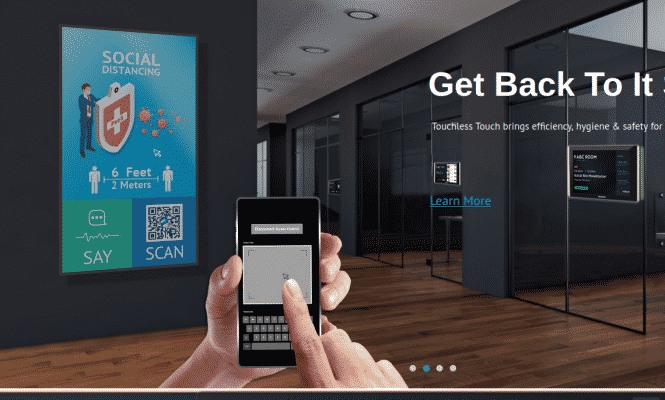
Good article by Tomer Mann of 22Miles on The New Standard for Wayfinding: Three Technology Features Improving the Visitor Experience. March/April 2021
Excerpt:
Much has changed in the past year as a result of the COVID-19 pandemic. AV/IT managers, systems integrators, and facilities managers alike face a heavy set of expectations as they navigate new opportunities and challenges in supporting the return to normal across enterprise, higher education, retail, healthcare, and other industries. Typical building operations that managers had planned for are now accompanied with new public safety initiatives, and from accommodating the ever-adapting COVID-19 safety regulations to ensuring peace of mind and safety for building occupants, there are many new logistical considerations to be met. Nevertheless, there are also prospects for new innovations in facilities amid the mandated public health shifts: immersive and interactive technology is defining a new standard for safety and interactivity.
Recent advancements in management software introduce new digital signage applications and checkpoints for meeting spaces and facilities to keep safety at the forefront. By upgrading or installing digital signage solutions within a facility, businesses can leverage access control, room scheduling solutions, and interactive wayfinding to regulate and maintain a safe environment.
Let’s take a look at three innovations changing the way business managers approach digital signage, content management and wayfinding to improve the entirety of the visitor experience:
Read the full article by Tomer Mann of 22Miles on The New Standard for Wayfinding:
Tomer goes on to list three innovations
For more information, you should visit 22Miles.com
From NRN — Bite Ninja lets foodservice companies dole out drive-thru shifts to trained salesperson freelancers working remotely in an Uber-like system. Editor Note: Putting Gig workers to work in advisory order-processing mode onscreen is a first. Normally this is addition to guided selling or customer service app.
Excerpt:
Bite Ninja — founded by Memphis Meats cofounder and restaurant operator William Clem and entrepreneur Orin Wilson in 2020 — uses a gig economy model to allow restaurants to outsource their drive-thru operations to freelance “ninjas” working from home. Although the Uber-like system is only available right now at Clem’s restaurant Baby Jack’s in Tennessee, it will be rolling out soon to 5-6 unnamed mid-sized restaurant chains.
Much like Uber Eats, Bite Ninja matches up gig workers working from home with a restaurant operator in need of someone to work the drive-thru, virtually through their own computers and proprietary software. Workers can sign up for shifts, and there is even surge pricing for restaurant operators that need workers at short notice and during peak hours. When a customer pulls up, they’ll see a friendly (remote) face on a screen to walk them through the ordering process. The customer gets clear and consistent customer service, and the restaurant gets to outsource a pain-point for their in-person employees, Clem and Wilson say: it’s both a staffing and software solution.
Stop by Booth 507 for Kiosk Information Systems at ATMIA this week
Bitcoin ATM machines are exploding in popularity, with over 800 ATMs being installed every month throughout the US retail landscape.*
News today is Coin Cloud set to reach 2,000 digital currency kiosks (aka as Bitcoin Kiosk and conflated into ATM derivatives.)
The Krypto Kiosk series provides a secure and convenient 2-way ATM platform for self-service bitcoin purchase and redemption at retail outlets like convenience stores, gas stations, malls, and grocery stores. KIOSK Information Systems has extensive experience with financial services platforms, with a long history of success in high-volume nationwide deployments.
This ATM platform leverages important financial design elements facilitating simple field servicing while maximizing cash security.
The Krypto Kiosk ATM Series is equipped with the following common transaction components:
This year’s event will continue to be the largest and most highly regarded event for the ATM industry. The class schedule will offer a variety of educational opportunities no matter what sector of the industry you come from. Join us for a pre-conference workshop, select a few of the 18 breakout sessions to attend, and don’t miss out on the general sessions on the last day focusing on what is going on in the industry.
We know you are ready for some in-person business networking after a long pandemic with its associated social isolation. So we are offering you an exhibit hall filled with new technologies, innovations, and new business opportunities. You have waited long enough to attend the industry’s best and the world’s largest dedicated ATM conference. So register today!
This website contains all the information for you to plan your days at the conference. Come back regularly, as additional detail and updates will be incorporated in the days ahead.
Register today!
Multiple news items and photos of FastPass+ Kiosks by Disney this week. Over on the “Blog Mickey” site we see photos of uncovered FastPass kiosks.
Excerpt
Of course, FastPass+ remains suspended at this time, and despite nearly each and every COVID-19 measure being rolled back or removed, Disney still cites COVID-19 as the reason that FastPass+ is unavailable:
As a result of the COVID-19 impact on operations, the FastPass+ service is suspended for the time being. FastPass+ service is not offered with the purchase of tickets or annual passes. We will share future updates at a later date.
Related articles —
Thanks to KDSEurope for publishing our Go Big or Go Small feature article
EDITOR’S NOTE
NEWS
A round-up of some of the latest kiosk and digital signage news to hit the editor’s inbox.
THE MOMENT OF TRUTH
Neil Anderson, Managing Director of Qcom Outsourcing explains how the effective rollout and installation of equipment can be amongst the most important ‘moments of truth’ for any technology manufacturer, systems integrator or reseller.
THREE THINGS EVERY RETAILER NEEDS FOR A NEXT-GEN OMNICHANNEL APPROACH
John Tait, Global Managing Director, TNS Payments Market takes a look at how a truly omnichannel approach in retail means more than simply having all of the channels. It’s more important what retailers do with those channels for their customers, and how well each channel interconnects with another.
BIG OR SMALL, TOUCH OR TOUCHLESS, LCD OR LED
Richard Slawsky, Adjunct Professor at the University of Louisville takes a look at the evolution, current status and future for kiosks, digital signage and large format displays.
TRUE IMPACT OF DIGITAL TECHNOLOGY ON WORKFORCE EFFICIENCY
echnological advancements always come with fears around the future of humans in the workforce. But humans weren’t replaced by computers when they were brought into the workplace, and Richard Bird, Regional Sales Manager at Mandata believes AI won’t replace us completely either.
ENSURING ROBUST NETWORKS IN DEMANDING APPLICATIONS
As more embedded systems adopt networked architectures, Ethernet switches play an increasingly crucial role. Martin Frederiksen, MD of Recab UK, explains how to select Ethernet switches for demanding operating environments.
SECURITY BEFORE PERFORMANCE IN OUR CONNECTED AV WORLD
It may be painful for AV managers in the connected world of cloud-based signage operating over corporate IT networks, but Jeff Hastings of BrightSign says security has to take precedence over performance and functionality.
MOVERS AND SHAKERS
A round-up of promotions, structural changes and new recruits across the kiosk and digital signage industry.
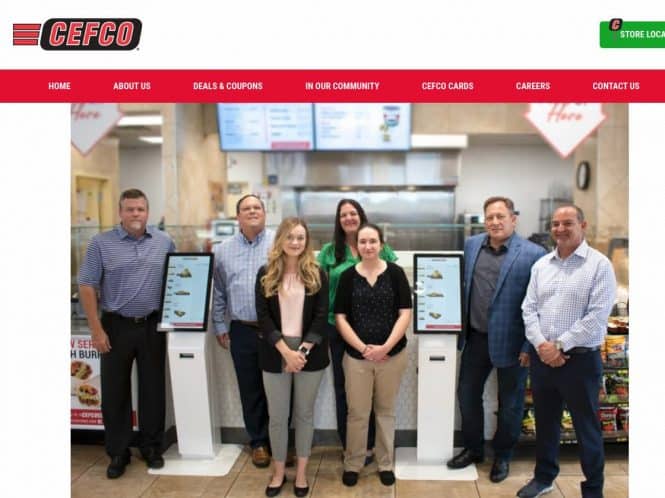
From CSNews July 2021 — Also CEFCO Full Release — In partnership with software company, Reji, LLC, and Olea Kiosks, CEFCO has launched fresh-food, self-ordering kiosks, featured in two CEFCO Kitchen stores enhancing customer service through made-to-order food offerings.
Editors Note: Fresh food at C-Stores is one of the new differentiators. Custom ordering from the kitchen (or the ghost kitchen?) has joined the equation for customer convenience and satisfaction
Temple, TX (July 26, 2021) — CEFCO Convenience Stores launched new self-ordering kiosks with technology from software company, Reji, LLC, and the Austin model from Olea Kiosks, Inc. in two of its Texas-based CEFCO Kitchen locations. Both stores feature CEFCO Kitchen’s new menu lines, including made-to-order Mac & Cheese Bowls, Sandwiches, Grilled Cheeses, and new breakfast offerings to complement their current lineup of burritos, tacos, fried chicken, and more.
This new platform continues to improve the CEFCO customer experience through fresh food menu personalization, offering a more seamless way to order food from CEFCO’s growing fresh food menu.
Email Olea kiosks for more information

CEFCO Convenience Stores is a Temple, TX-based convenience store chain and is one of the top 40 largest in the convenience retailing industry, operating over 200 stores in Texas, Alabama, Mississippi, Louisiana, Arkansas, and Florida. CEFCO employs more than 2500 team members, chain-wide. Since 1979, CEFCO has been committed to providing the best customer experience for every customer, every day, in every store.

Reji, LLC. is a software company revolutionizing self-ordering technology through its open platform. Reji specializes in self-ordering and self-checkout experiences, online ordering, point of sale, digital menu solutions, inventory management technology and also provides direct and competitive merchant processing. Based in Las Vegas, NV, Reji’s growth has been catapulted through partnerships in many industries including QSRs, Fast Casual, and Convenience. For more information, visit https://reji.io.

Olea Kiosks® Inc. is a self-service kiosk solution provider for the attractions and entertainment, healthcare and hospitality industries. Its technologically advanced, in-house manufacturing, design, and innovation have made it an industry leader. Headquartered in Los Angeles, California, customers include The Habit Burger Grill, Kaiser Permanente, Empire State Building, Universal Studios, EVO Entertainment, Scientific Games, and Subway. For more information, visit https://www.olea.com/.
|
|||
|
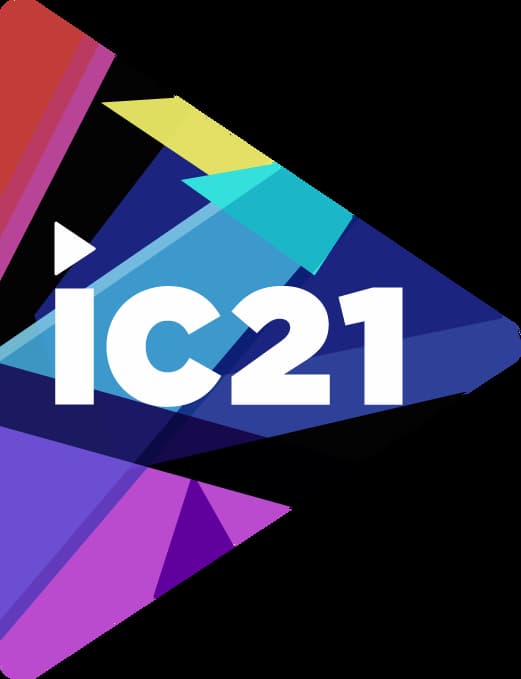
Looks to be a very good show this yet.
Kicking it off WAS the Digital Mixer Event that Sixteen:Nine was to be hosting. Took all of 36 hours to get a full set of sponsors. Unfortunately, travel for Canadians is problematic.
Registration for that event is expected sometime after labor day.
Exhibits Only Pass is $299 but we have a limited number of free passes that we are happy to provide. You need to sign up for our no-nonsense ad-free monthly newsletter here. Or you can email [email protected]
Some of the 463 exhibitors include:
From EuroNews July 2021
In Brief
Article
The EU’s Digital COVID certificate officially comes into force from today, 1 July.
By Wednesday evening, 21 EU nations, out of the total 27, were connected to the system’s network and 6 others were technically ready. Some countries already began using the new health certificate in June.
According to the European Commission, all member states should now be in a position to issue and accept the pass, except for Ireland which has been delayed by cyber attacks.
But the launch comes under the cloud of the Delta variant, which is already prompting EU countries to restrict travel from countries where it is prevalent, such as the UK, Portugal and India.
The airline industry has also warned that EU countries are not coordinating their approaches to vaccine certification, potentially causing long delays at airports during the busy summer season.
https://www.euronews.com/2021/05/21/everything-you-need-to-know-about-the-eu-s-covid-travel-pass
Read full article From EuroNews July 2021
Also see Vaccine Passport Kiosk Landscape
Related News from EuroNews
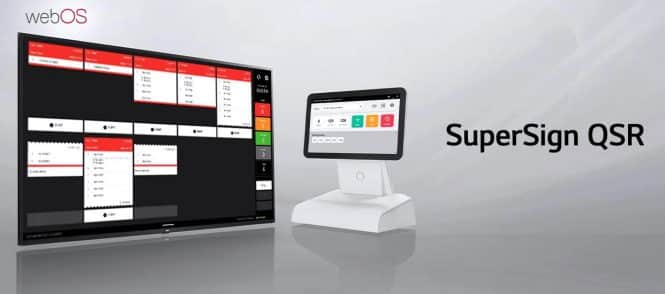
Read the full article on Sixteen-Nine.Net
In Brief
Excerpt:
If you are active on the software side of digital signage, you’ve undoubtedly seen Samsung evolving its MagicINFO software from a low or no-cost add-on for small jobs to a full-featured enterprise platform that competes against pure-play CMS software companies.
LG has also had a product called SuperSign in the market for more than a decade, and that display manufacturer is also now marketing a full-featured product. The interesting wrinkle with LG is that it is touting a turnkey solution for QSR that includes built-in capabilities like queue management, open API POS integration and back of house workflow solutions.
It’s called SuperSign QSR, and it LOOKS like it is all in-house, as opposed to partnerships with third parties that specialize in things like queue management.
Read the full article on Sixteen-Nine.Net
For more information on Supersign you email [email protected] or call 720-324-1837
From MCA with thanks to Sixteen:Nine — older article from fall 2020 but it shows countertop kiosks for orders. Worth noting that Taco Bell announced cantina kiosks at Times Square back in April 2021. This precedes that by 6 months. Nice gallery of pictures.

cashierless restaurant of future
In Brief
Excerpt:
Itsu, the Asian-inspired, healthy fast-food brand, has unveiled its new ‘Store of the Future’ concept, which uses robot technology.
The first site opened in London’s Great Portland Street earlier this month, with more to follow across the UK.
The new store design was re-imagined during lockdown specifically for the post-coronavirus world.
The brainchild of itsu founder Julian Metcalfe OBE, it was designed to limit touchpoints, and any unnecessary contact with dishes and between staff & customers, using ‘sushi robots’ and digital ordering technology.
At Great Portland Street, there is a single customer collection point and no front-of-house fridge to reduce multi handling.
The order and pay screens are card only, and enable orders to be placed in under 40 seconds, with customers able to customise hot dishes.


Keynote Speaker — Sachin Dev Pavithran, Ph.D. – Executive Director U.S. Access Board
See m-enabling website — The Kiosk Manufacturer Association is an exhibitor and sponsor for the upcoming Summit.
In Brief

Kiosk Accessibility and ADA tabletop display in Arlington
The M-Enabling Summit Conference and Showcase is dedicated to promoting digital environments and assistive technologies for senior citizens and users of all abilities. It is an annual meeting place for all who implement digital inclusion strategies or develop assistive solutions and accessible digital contents and services for workplaces, learning environments or consumer markets. With its theme of “Strategies for Inclusive Digital Transformations,” the 2021 M-Enabling Summit will highlight the major shifts in business, government and education driven by the pandemic that will affect anyone involved in inclusion, accessibility, services to Persons with Disabilities or compliance matters. A rich sharing of experience and interactions among advocates, business leaders and technology providers will provide insights on how to best meet the imperative to ensure that Persons with Disabilities have full access to critical digital contents and services.
Since its inception in 2011, the M-Enabling Summit has established itself as the ideal venue for corporate executives, advocates, accessibility professionals, policy makers, care givers and assistive technology experts to explore how to foster and drive digital inclusion. A powerful differentiator in establishing a positive culture and gaining a competitive advantage, digital inclusion is embraced by leading organizations across all sectors of activity. The M-Enabling program is designed to give participants the tools, knowledge, and networking opportunities to explore the latest innovations in enabling and accessible technologies and share good practices among their peers.
Bringing together professionals, corporations, service organizations, and key thought leaders, the M-Enabling Summit is an all-inclusive conference and showcase for professionals featuring innovative technology that benefits more than one-billion Persons with Disabilities worldwide.
As during previous years, the 2021 M-Enabling Summit will feature the annual IAAP Expert Workshop Day on October 6th organized by the International Association of Accessibility Professionals, as well as sessions dedicated to the advancement of the Accessibility Profession.
Bringing together professionals, corporations, service organizations, and key thought leaders, the M-Enabling Summit is an all-inclusive conference and showcase for professionals featuring innovative technology that benefits more than one-billion Persons with Disabilities worldwide.
The M-Enabling Summit is committed to working with the venue, service providers, and vendors to customize a “health safety first” approach throughout all phases of event production and onsite execution. Review our health and safety policies.
Related Information
From PRNewswire and AP News

Intel kiosk tradeshow
InfoComm (AVIXA) is the biggest digital signage AV show in the U.S. KMA is an official media partner. See a list of exhibitors and information. We have rated this as a “green light” for safety given the safety protocols exceed the recommended CDC guidelines. October 27-29 is the date and yes we have free passes. Contact [email protected] for more info. Samsung is main sponsor. Also Blackmagicdesign and Crestron
CREATE in Denver this October, begins 10/4 and ends 10/6. We have a limited number of free passes and also free invites to the MenuMaster Awards festivities (hundreds of restaurant leaders meet and greet, enjoying free food and drinks at Mile High). As part of CREATE you can view interactive session with Scott Deviney, CEO of Chicken Salad Chick on restaurant growth strategies. Other speakers include Blaze Pizza, Chipolte, Popeyes, Buffalo Wild Wings, Chicken Salad Chick, Bloomin Brands, Checkers & Rallys, True Food, McDonalds, Yum! Brands, Domino’s Pizza, Wingstop, Wendys, Hissho Sushi, & Applebee’s Grill & Bar. Contact [email protected] for more info.
M-Enabling Summit in Arlington, VA — Sachin Dev Pavithran, Executive Director U.S. Access Board will be delivering the keynote. We have a table and you can visit with Laura and Matt of Vispero. Contact [email protected] for more info.
NRF in New York in January — preparations are underway for our booth for NRF (and also NRA in Chicago)
News This Month
Public Service Announcements
For more information contact Craig Keefner, 720-324-1837 or [email protected] or you can visit Kiosk Industry
Article posted on PaymentsDive Sep2021
In Brief
Excerpt:
City governments nationwide are joining a trend to make more cash payment options available to consumers looking to pay their bills, with Chicago undertaking a significant expansion and New York installing new kiosks for the first time next month.
Cities take in more income when consumers have additional ways to pay for parking tickets and taxes, while residents benefit from conveniently placed kiosks that don’t charge them fees and that have access to their data.
Chicago installed another 30 kiosks this summer under a contract with kiosk vendor and software provider CityBase, and plans to pepper the city with 119 kiosks by next June, up from 74 now.
Related Links
We see stuff (like everybody else). Some interesting stuff.
For nice video of Wawa click here.
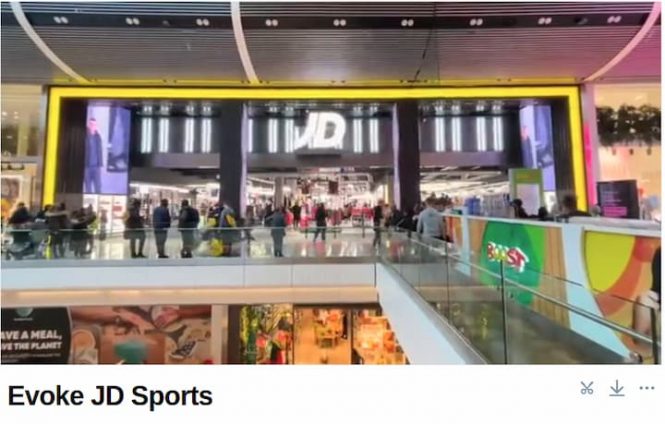
From Evoke Creative
After 8 years of working with JD Sports Fashion plc aiding their #DigitalTransformation that drives their business forward internationally, we are proud to showcase the launch of their new flagship store at Westfield, Stratford which is one of our most technologically advanced builds since developing their NYC and Paris store back in 2020.
We have been working with JD to develop this flagship store for over a year, focusing on creating a captivating and interactive experience for their customers. Adding an additional 80 screens and LED displays to JD’s existing estate of over 3000 live devices around the globe, this store stands as one of our most innovative installations yet. All devices can be controlled through our EvokeCloud CMS that allows users to run bespoke and synchronized campaigns and interactive experiences across a multitude of devices on demand.
We also implemented several Innovative Wall Mounted KPOS Kiosks to assist customers in browsing, ordering, and making contactless payments to minimise the till queues at peak times. This powerful kiosk packs a fully interactive touchscreen display, integrated contactless Chip and PIN, security de-tagging and printer system, utilized to create a seamless consumer journey.
Footwear Order Screens and Software have been added to allow customers to browse, select, order, and try on any footwear using their mobile phone.
The shop looks amazing, well done to everyone involved!

We welcome Geoffrey and Intuiface as a 2 Year Bronze Sponsor. Very robust authoring environment coupled with rapid application development (aka no coding required — all drag and drop templates). Complete portfolio of project videos to see end results. The extremely wide ecosystem for full-service provider partners is unparalleled in our experience. If you would like an introduction please email [email protected] or call 720-324-1837
Thanks!